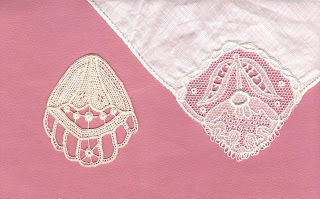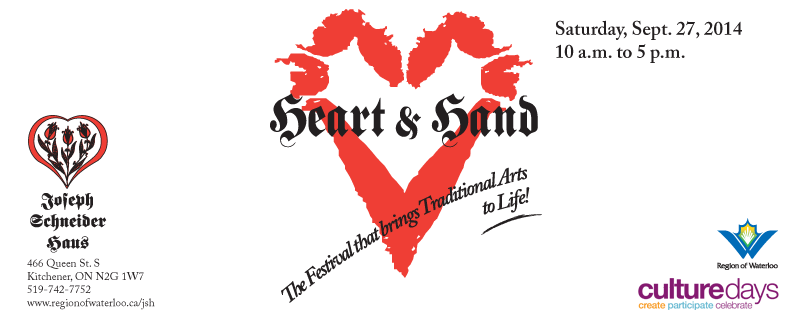 Our assistant curator Antoinette is ready for the weather. Lets see your rain gear fashion! Tweet us @hearthandfest!
Our assistant curator Antoinette is ready for the weather. Lets see your rain gear fashion! Tweet us @hearthandfest!
Saturday 21 September 2013
Heart & Hand: Rain or Shine!
When was the last time you played in the rain? ...and then dried off by an open hearth or a wood stove? Today is your chance! The Heart & Hand Festival starts today at 10 a.m. lots to do and see, inside and out! Find that perfect treasure and see traditional artisans at work!
 Our assistant curator Antoinette is ready for the weather. Lets see your rain gear fashion! Tweet us @hearthandfest!
Our assistant curator Antoinette is ready for the weather. Lets see your rain gear fashion! Tweet us @hearthandfest!
 Our assistant curator Antoinette is ready for the weather. Lets see your rain gear fashion! Tweet us @hearthandfest!
Our assistant curator Antoinette is ready for the weather. Lets see your rain gear fashion! Tweet us @hearthandfest!
Friday 20 September 2013
Heart & Hand: A visit to the Papertrail with Kevin Martin and Audrey Hollinger
 |
| Photo by Candice Leyland |
Join Kevin, Audrey (and their resident cricket) for a tour of their New Dundee shop, The Papertrail. They do it all from paper making, to printing and... paper marbling! They will be demonstrating this traditional art form TOMORROW at the Heart & Hand Festival!
 |
| Photo by Candice Leyland |
Come by and say hello, take part in a demo and pick up some one of kind marbled or hand made paper for your next project!
Want to visit the studio in person? The Papertrail will be taking part in the Rural Routes Studio Tour Nov 1 & 2. Check out the Papertrail blog for more updates and behind the scenes look at new projects, equipment and more!
Wednesday 18 September 2013
Heart & Hand: First Nations Artist and Educator Naomi Smith
 |
| Bead and quill work pieces |
Exploring the story of beadwork is one way that Naomi shares her traditions and culture. She creates contemporary pieces based on traditional examples. For over 15 years Naomi has designed and created traditional Native beadwork, leather craft, moose hair embroidery, quill work, sweetgrass or birch bark basket making and adornment, always valuing these sacred materials throughout her creative process.
Come out to the Heart & Hand Festival this Saturday, September 21 to learn more!
 |
| Contemporary and traditional examples of beadwork pieces |
 |
| Some of these traditional beadwork pieces are over 200 years old |
Tuesday 17 September 2013
Heart & Hand: Event Schedule!
 |
| Mary-Eileen McClear, founder of the Baden Storytellers entertaining at last years Heart & Hand Festival. |
Established in 1989 the Baden Storytellers Guild encourages individuals to hone and practice the traditional art of storytelling. Interested in finding out more or telling a story of your own? Join the guild for their Stories Aloud evening, an open mic night for adults held the second Friday of every month from September through June from 8 to 10:30 p.m at the Button Factory, 25 Regina St. South, Waterloo. Doors are at 7:30. The price is $5 and "lug a mug" for hot cider!Visit the Baden Storytellers Website for more information or to find out how you can become a member!
Monday 16 September 2013
Heart & Hand: Lace Maker Pamela Glew
 |
| Pam at last year's Heart & Hand Festival |
What was your first experience with lace? What initially drew you to this art form?
From childhood, I was attracted to lace because of its translucent and fairy-like qualities. I failed to get my grandmother to teach me her crochet lace skills, but taught myself shuttle tatting while in my teens. In my twenties I discovered that I was the namesake of Pamela Nottingham, one of the pioneers of the UK lacemaking revival, and bought her book on bobbin lacemaking, but didn’t start lace classes for another ten years, when I realized that “it was meant to be!”
 |
| Needle lace (left) and Carrickmacross, organdie applique on net (right) |
Are there different types of lace? What is special about the type of lace you make?Depending on how it is defined, there are hundreds of types of lace, grouped for convenience by their method of construction. Some are made with a single continuous thread, looped as in knitting or crochet, or knotted as in tatting or filet. Others are based on embroidery stitches, either applied to woven fabric or net, as in Hardanger and tambour, or built up from rows of buttonhole stitches, as in true needle lace. The bobbin or pillow laces are woven or plaited from multiple threads, wound on stick-like bobbins and hanging from pins placed in the pattern supported by a tightly stuffed pillow. Further sub-groups contain laces which combine two or more of these techniques, such as Battenberg or Ayrshire work, and of course, nearly all these types can be imitated by machine-made versions that look good enough – to the uninitiated! I am mainly attracted to some of the bobbin laces, because of their versatility, but I would need several more lifetimes to try them all, and new laces are being invented all the time, by teachers and designers. I also enjoy “dabbling” in other types of lace, especially Lier/Tambour from Belgium, Carrickmacross from Ireland, English “Hollie Point”/needle lace and still, occasionally, tatting!
Is lace making a dying art form? How can we ensure that the tradition of lace making survives?
Lacemaking as an economic activity/industry has all but died out, to be replaced by its role as a medium of artistic expression appropriate to our rapidly changing cultural scene. My interest in keeping it alive springs from my background in history, textiles and costume (for humans and dolls!) but I also like to explore new ways of using the techniques with non-traditional fibres, wire, beads etc. in contemporary designs and functions.
 |
| Lace making techniques used in new ways |
There are indications that many of the coming generation are interested in History as a means of interpreting our future, and if this interest extends to discovering the skills of traditional crafts and employing them to create the cultural objects of the future, lacemaking should survive along with the more obviously “practical” trades. The role of electronic communication will be crucial to this survival, enabling fibre artists from across the world to exchange ideas on dedicated chat sites, international and local guild websites, through educational initiatives with how-to videos, online courses with links to live teachers, downloadable documents, patterns and suppliers’ catalogues for ordering previously obscure materials with a few mouse clicks! Aspiring younger lacemakers used to search out the aged practitioners, to make notes on the fine points of the craft before it and they, passed away; now the next generation can go to the aged lacemaker’s website or watch her manipulate threads tirelessly on Youtube, but will also be made very welcome at the many live craft guild meetings, shows and demonstrations.
I have ongoing projects to make a replica 19th c. Bedfordshire lace fall cap, to be worn with my historical interpreter’s costumes, and to make a full-size, rather than miniature fan leaf, to fit some antique bone fan sticks.
Thursday 12 September 2013
Heart & Hand: Pysanky Artist Anne Cline

Decorated Ukrainian Eggs aren't just for Easter! Pysanky artist Anne Cline (Heart & Hand Best of Show Winner in 2012) is joined by her granddaughter as they explain the traditional meanings of Pysanky designs and demonstrate this unique art.
What do the different designs mean? How are they made? Where does this tradition come from? Watch this video and find out!
Visit Anne at the Heart and Hand Festival Saturday, September 21 as she demonstrates her traditional folk art.

Tuesday 10 September 2013
Heart & Hand: Ceramic Artist Rosemary Aicher
Ceramic artist Rosemary Aicher invites us into her pottery studio. Watch as Rosemary throws a bowl on the wheel. Learn a little about her technique and her unique style.
Rosemary will be at the Joseph Schneider Haus Saturday, September 21 for the Heart & Hand Festival. She will be demonstrating throwing on the wheel and giving you a chance to try your hand!
Thursday 5 September 2013
Heart & Hand: Origami Tulip
The Heart & Hand flyer is really a tulip... an origami tulip that is! Get your copy today or follow this instructional video and learn how to make your very own. Summer is winding down but you can create a little bit of spring with this craft.
Join us Saturday, September 21 at the Joseph Schneider Haus for hands-on activities, stories, music and much more!
Join us Saturday, September 21 at the Joseph Schneider Haus for hands-on activities, stories, music and much more!
Subscribe to:
Posts (Atom)








